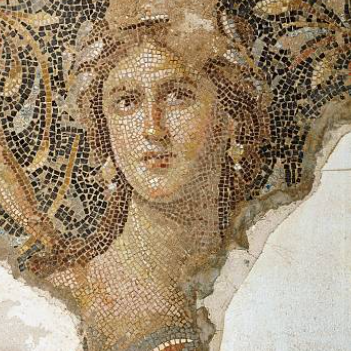Talmudic Reflexivity
Sheets
Filter
 Joshua ben Hananiah and the Ivory Tower
Joshua ben Hananiah and the Ivory TowerTales of Talmudic Reflexivity
Dovi Seldowitz•1583 Views•October 26, 2022•Joshua Ben Hananiah,Criticism,Reflexivity,Self-Critique,Yehoshua Ben Chananya

 אישתיק עזה
אישתיק עזהInspired by the approach adopted by the authors of Dirshuni, this sheet presents a Midrash concerning the seven curses of Gaza found in Tanakh and links them with the passage in Gittin 56b concerning the destruction of Jerusalem.
 The Fishpond (Taanit 24a)
The Fishpond (Taanit 24a)A new reading of the story of the humble teacher and the fishpond (Taanit 24a).
 Reflexivity on the Genocide of Amalek in Esther Rabbah
Reflexivity on the Genocide of Amalek in Esther RabbahIn a chaotic re-reading of the Megillat Esther, the Midrash offers up the perspective of Haman and Amalek as background for the decree against the Jewish People.
 Yalta: The Story Arc of a Rabbinic Woman
Yalta: The Story Arc of a Rabbinic WomanThe famous Yalta wine tale is presented alongside two other Yalta stories. Combined, these produce a three-part narrative arc of one of the most frequently mentioned women in the Talmud.
 Torah of the Shuk: The Market as a Site for Ethical Learning in Midrash and Aggadah
Torah of the Shuk: The Market as a Site for Ethical Learning in Midrash and AggadahThe market is a site that features in many tales in Midrash and Talmudic Aggadah. Rather than conjuring up a portrait of matters of the mundane or even the profane, the market of Midrash is transformed into a site of ethical and moral learning.
 Amram the Pious: Toward an Expanded Profile
Amram the Pious: Toward an Expanded ProfileRabbi Amram the Pious is mentioned a total of six times in the entire Talmud. But is it possible that there is more to his story? This sheet reviews past profiles of this Talmudic character and offers direction toward a more expansive approach.
 Elazar and the Magic Wheatstalk
Elazar and the Magic WheatstalkIn a seemingly delightful tale, the Talmud offers a portrait of a pious man who will stop at nothing to give charity. But as the story continues, we find that the pious man's actions place an undue burden on the members of his family...
Dovi Seldowitz•1053 Views•March 8, 2023•Talmudic Reflexivity,Weddings,Wheat,Taanit,Miracles,Charity,Midrash Theatre Company,Magic
 The Oven of Akhnai and the Anxiety of Rabbinic Authority
The Oven of Akhnai and the Anxiety of Rabbinic AuthorityA summary of Prof. Christine Hayes' commentary on the tale of Oven of Akhnai and Talmudic anxiety over the range of rabbinic authority

Editors
DS

Dovi Seldowitz
Owner

